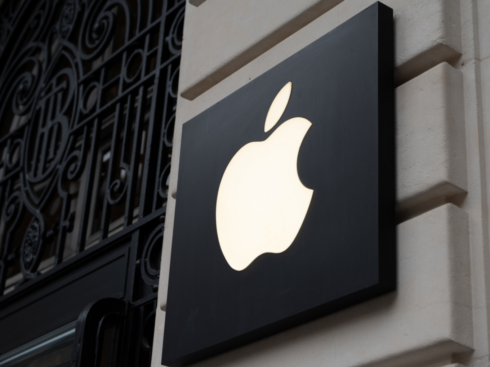
While claims from both Ola and Uber about their market share are a bag of contradictions, recent call data released by Swedish firm TrueCaller, points out to more calls being made between Ola and its riders as compared to Uber in the first four months of this year. The data at first sight might seem to suggest that Ola is in the lead in the on demand taxi game, but can it be a true indication of the market shares of the two rivals?
Let’s take a look at the data first:
TrueCaller used its database of call tagging to look at the volume of calls coming from numbers that it knows to be Uber and Ola drivers to get a snapshot of the ratio in which the two services are used. From January 1st to April 17th, Indian smartphone owners (numbering roughly 205 Mn) made and received 2.49 Bn calls to some sort of cab service.

Interestingly, February recorded the highest number of calls in the period, with almost 800 Mn calls made between cab owners and consumers.

When it came to the call share volume, TrueCaller found that about 2.34 Bn calls or almost 94% calls made for taxis or private cars were made independent of Uber, Ola, Meru or Ola-owned TaxiForSure. For Ola, the number of calls made at 102 Mn or 4.1%, for Uber at 39 Mn or 1.6%, and for EasyCabs it stood at 9.3 Mn or 0.4%.

Also, out of the 102 Mn calls between Ola Cabs and its users, Ola made 42.5 Mn calls to its users, while 59.5 Mn calls were made by users. In the case of Uber, its users received 13.6 Mn calls from the company, and called the company 25.4 Mn times.

Since reliable information addressing, the market share for taxi on-demand companies is hard to come by as both companies give wildly differing statistics, this information from TrueCaller might lead one to deduce that Ola’s market share is somewhere around twice the size of Uber.
However, there a few caveats associated with this conclusion. First of all, the data is about number of calls made between cab companies and users. However, it is not entirely representative of number of rides hailed. So it will be incorrect to say that just because 102 Mn calls were made between Ola users and drivers compared to the 39 Mn calls between Uber and its riders, Ola’s market share is twice that of Uber. However it is evident that more calls are being made to Ola as compared to Uber which might hint to larger number of riders hailing Ola.
But given the fact that these taxi hailing apps are expected to provide a seamless experience to users, so the number of calls being made is not something that should factor in their operations. If my driver is expected to reach on time and I am kept informed about that with notifications, the need for exchanging calls should be minimum for a better user experience. Keeping aside that, this brings us to the second problem with this data. It does not allow segregating the multiple calls between a driver and passenger which are quite common. You could have called to enquire about the driver’s whereabouts or the driver could have called you to know yours more than one time, and thus it again makes it difficult to deduce conclusively again about number of rides and market share.
An Uber spokesperson had this to say about the findings,
“Uber’s best-in class maps and navigation make it possible to get a ride without having the need to call – be it to give directions or share time estimates. Our goal is to connect people who need a reliable ride – across borders, cultures and languages, at the push of a button and our product & technology makes that possible. More calls between riders and drivers leads to a sub-par experience that we solve for with our technology.”
The obvious counterargument to this is that given the higher number of exchanges between Ola drivers and riders, it must be getting more calls and leading the race. Which is what Ola has been maintaining, as it aggressively expands its network and offerings. When contacted by Inc42 about the TrueCaller data, Ola’s spokesperson responded with the statement of Raghuvesh Sarup, Head of categories and CMO at Ola:
Ola Micro alone as a category, is larger than our nearest competitor as a whole.
Launched last month, Ola’s least expensive compact car service Micro is the latest weapon in its arsenal to directly take on Uber’s UberGo.
Nevertheless, coming back to the data, it applies to TrueCaller users only and it can’t be said with surety how many active TrueCaller users are there in India. So non-users of TrueCaller who might otherwise be using Ola/Uber are not a part of this set. Also, TrueCaller doesn’t have the same kind of permissions on iPhones. So this data is most likely applicable for Android phones only, though of course the no of iPhone users would be a miniscule fraction of the number of Android users.
However, the one most conclusive thing the data points out is the huge room for expansion, both these rivals have given that 94% of calls were still made for taxis or private cars or services. It is quite possible that a big part of these could be private cab companies which are contracted by companies to ferry their employees. That market is not strictly on demand but works on leases and contracts-something which is outside of the models of the two rivals. So, leveraging that might be a challenging proposition for the two players but nevertheless points out to the huge demand size for cabs. Added to that is the fact that smartphones users are projected to reach over 500 Mn in India by 2018, thus a huge potential lies ahead for on-demand cabs.
As rightly noted by TrueCaller “As you can see, these new app-based services are still just a drop in the bigger ocean that is the Indian taxi industry. Even if the market keeps growing at anywhere near the pace it currently is, then there is abundant room for more than one service to operate.”
So while the findings might not exactly point out to how big are Ola’s and Uber’s market shares. The one thing they definitely pointed out that there is a hell lot of scope for them to grow further.


























